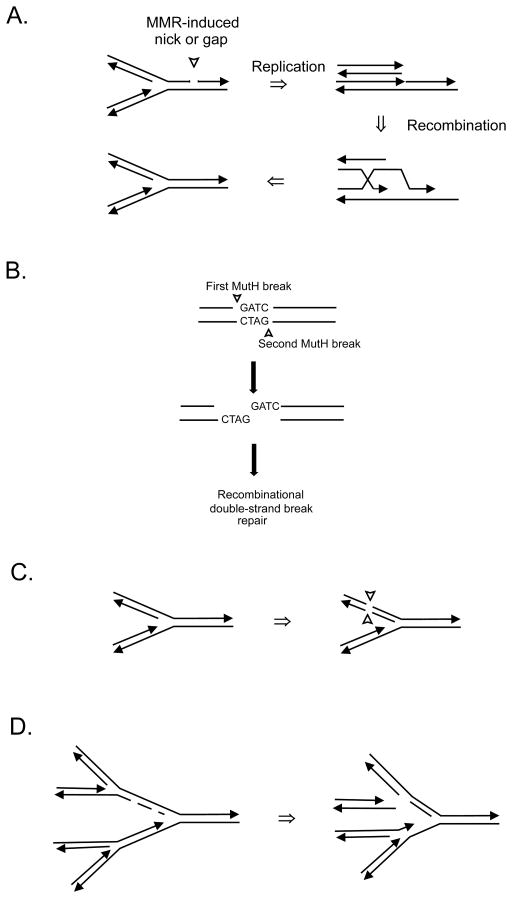FIGURE 7.
Models illustrating double-strand break formation in a dam mutant. (A) A replication fork encounters a mismatch repair (MMR) intermediate of a nick or gap on one strand leading to replication fork collapse. The MMR intermediate could arise from the processing of endogenous DNA damage or from repair of a replication error from the previous replication. Recombination between daughter chromosomal arms can restore the fork which can then be loaded with the DnaB helicase and DNA polymerase III holoenzyme. (B) MutH nicking on opposite sides of the same GATC in non-replicating DNA produces a double-strand break which can be repaired using a sister chromosome. (C) MMR processing of a replication error either by action at the same GATC as in panel B or by overlapping excision tracts from GATCs on opposite strands producing a double-strand break that can be repaired using the daughter strands as template. (D) Mismatch repair-independent double-strand break formation. Asynchronous initiation of chromosome replication in a dam mutant could lead to two initiation events close together resulting in two closely spaced forks on each chromosomal arm. If the second fork catches up to the first, replication fork collapse occurs. The exposed double-stranded end becomes a substrate for RecBCD exonuclease which, when encountering a Chi site, loads RecA on single-stranded DNA thereby generating an SOS inducing signal.

